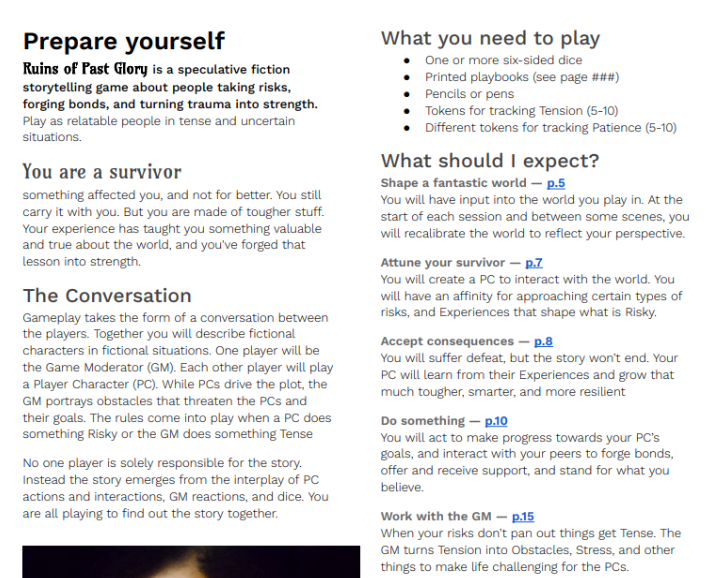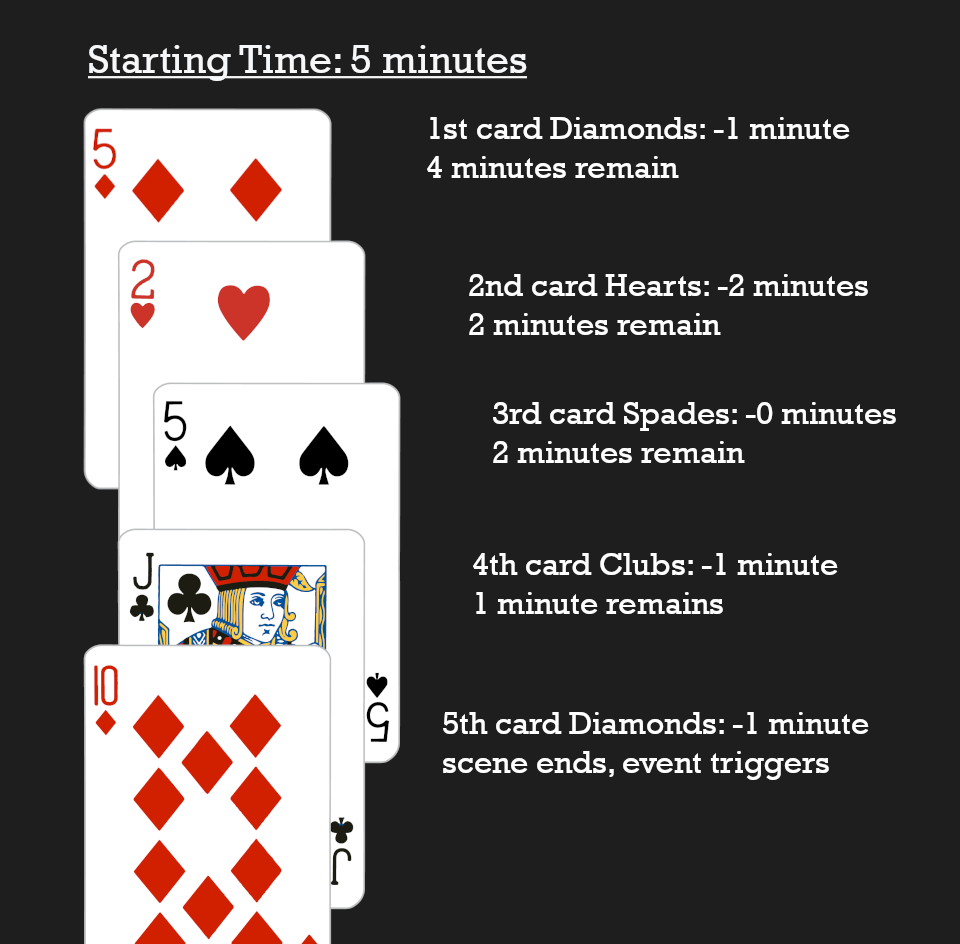There are a numerous and varied amount of core conflict resolution mechanics in tabletop roleplaying games and each has a unique effect on its game. Let’s start with the most common resolution mechanic, dice, by comparing two of the ttrpg industry giants: the 2d6 and the d20.
Dice are a big topic with a lot of supporting mechanics that impact how they are perceived in the game. In this article we will solely focus on the feelings provoked by the act of rolling dice. We are going to work with a few assumptions for this article.
Dice are used to resolve a conflict in the narrative where the results are unknown.
The dice results have a narrative significance to everyone in the game.
The cause of the conflict is summed into one number, the target number.
To resolve the conflict in a way favorable to the player, the result on the rolled dice must be greater than the target number.
We should start with, “When and why do dice provoke feelings in games?” Before we roll a die, there is an anticipation for the result. This anticipation is created by the stakes from the narrative. We cannot control this with different dice types and configurations.
While we are rolling the die, there is the effort we put forth in the act. This effort is mildly dependent on the number of dice rolled—but for this article we will consider that difference insignificant. (We will come back to it in a later article.)
Then, the appearance of the die result brings the predefined stakes to life. This we can emotionally manipulate by shifting the target number and dice results meaning, which is influenced by our choice of standard dice.
Before all of this there is the choice to roll, which usually involves both the motivation to act, and an assessment of the risk.
All of these pieces together create an emotional adventure every time a dice is rolled. It is a simple process to tie the random result to a narrative meaning, and that’s what makes dice work so well at provoking feelings in our ttrpg games.
The two things we can control most in the design process with our choice of dice is risk assessment, and the appearance of the result. We control the challenges we face by weighing the expected difficulty (target number), the expected dice results, and the stakes (narrative and mechanical benefits, and consequences). This is our risk assessment. The appearance of the result is where we make real the stakes based on the chance of success (expected dice results vs. expected difficulty). In both cases, our choice of dice and the target number—in this analysis we’re going over the d20 and 2d6 as the most common types—evoke different feelings in games.
To look at this more in-depth, we need a way to convert the expected dice results vs. the target number to in-game feelings. For simplicity, I will focus on these five feelings:
I expect to succeed
I will probably succeed
I hope I succeed
I will probably fail
I expect to fail.
Then, during the second aspect, we need to convert actual dice results compared against a target number, to in-game feelings. I will focus on four feelings for simplicity’s sake:
I greatly succeeded
I barely succeeded
I barely failed
I greatly failed
Then, we will take both sets of these feelings, see when we experience them with each die, and why that matters.
d20 Basics
From a math perspective this die is a simple 5% chance for each number. So, to create our five target emotional states for expected results we would need to roll against the following target numbers.
Target 2 is a 90% success chance; our “I expect to succeed.”
Target 6 is a 70% success chance; our “I will probably succeed.”
Target 10 is a 50% success chance; our “I hope I succeed.”
Target 14 is a 30% success chance; our “I will probably fail.”
Target 18 is a 10% success chance; our “I expect to fail.”
2d6 Basics
Math is less simple here because with two dice the middle numbers (6,7,8) of the range show up a lot more than the ends (2, 12). With 7, our most common number, appearing 17% of the time and the 6 and 8 both appearing 14%, nearly half of the time you roll you will see one of those 3 numbers. For our target states, we can see how that differs from the d20 as well.
Target 3 is a 91.5%; our “I expect to succeed.”
Target 5 is an 72.5%; our “I will probably succeed.”
Target 6 is an 55.5%; our “I hope I succeed.”
Target 8 is an 27.5%; our “I will probably fail.”
Target 10 is an 8.5%; our “I expect to fail.”
Simply, our chances of getting each number are the following: 2, 12 - 3%, 3, 11 - 5.5%, 4,10 - 8%, 5, 9 - 11%, 6, 8 - 14%, 7 - 17%.
A d20’s Feelings
The d20, like all single dice, is mathematically easy to understand due to the linearity of the results. The incremental increase is the same for each mechanical step, but each step feels noticeable enough to feel some type of narrative progress with numerical increase. While I have provided some general numbers and feelings, due to the granularity of the d20, the feelings exist more in bands of numbers than just single points. In other words, the “I hope I succeed” feeling exists from 7/8 to 12/13 depending on a player’s optimism.
What a 2d6 feels like
The bell curve has a cool effect on our probability where each number in the center translates to an amount we can feel and imagine. Moreover, each number further from the center provides less and less gains when we improve our characters. In a way the dice naturally transition between hope tiers.
What that means for the narrative
A lot of what I have said so far is not unique to ttrpgs, but all games that use these dice. The unique aspect of ttrpgs are the narrative stakes that are attached to the dice’s results. Focusing on how the results inform the narrative, we need to see how both phases we outlined earlier impact the narrative. In the narrative we are controlling characters that encounter obstacles that must be resolved to advance the narrative. In dice terms, the expected results are a comparison of the character’s perceived chance (expected dice result) to resolve an obstacle (target number). Once the results are cast, the characters actions (actual result) are used to resolve the obstacle (target number) to advance the narrative to either a pass, fail, or any other narrative progressing state. So in short, the dice result is directly how our characters perform. The target number is how difficult the obstacle is.
When we check the values above, encountering an obstacle in a game with a target number of 14 in a d20 system we as characters, expect to fail. The narrative is informing us this is something difficult for us to do. We then weigh the rewards against the consequences and decide what to do from there. If the consequence of not opening the locked door is to be eaten by a Grue, then 30% chance seems pretty good and we try to open the door.
The actual results then inform the narrative of what actually occurred. Using the 2d6 as an example, we roll a 9 against the target number of 8, our “I expect to fail” obstacle, and successfully open the door. Our characters look competent and we feel like we accomplished the task well. On the other side, we roll a 7, a perfectly common and acceptable result, but the door is just too tough and we do not have enough time. Our character proves to be inadequate and we feel like we failed even if only barely and given the difficulty, we come out a bit optimistic since we did so well in face of such a difficult challenge.
We can see from the example above, that both dice can similarly evoke feelings of anticipation for expected results, and GMs can control those feelings with the actual narrative consequences. In this situation these two dice systems are similar in many ways, but mathematically the key differences are in the consistency and the granularity.
The d20’s linear scale and wider range gives it more granularity, allowing the GM to express a wider range of obstacles. This comes at the cost of two things: less impact per number since we need a number difference of 4 to move between expectation changes, and more inconsistencies in expected character performance and actual (the further the number is away from the target number, the worse the result).
The 2d6’s bell curve and smaller number ranges do not have the same issues. These two effects combined create a system that means each number increase is an impactful change to narrative obstacle difficulty. The cost is that mathematically, the exact change and value of each number is harder to understand, see the percentages above for more details.
This discussion is far from over, and the details listed above are only the start of fully understanding how the choice of dice affects a game. So far we have only covered the anticipation and actualization of the dice results to some dice systems we know. Next time, we need to see how modifiers affect the feelings our dice evoke.
This article is part of the Indie Game Developer Network’s blog series. The content of this article reflects the views of but one member of the IGDN. This IGDN blog article is brought to you by Brandon Gutowski of the C22 System. If you want to get in touch with the contributor he can be reached on Twitter at @c22system, on Facebook @PagodaGamesLLC, or visit their website at www.c22system.com.


















